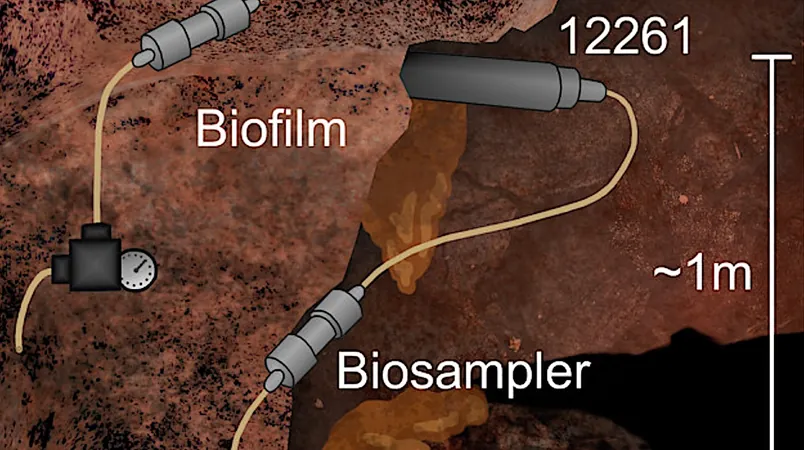
Unveiling the Ancient Microbial World: The Dominance of Candidatus Frackibacter in Deep Subsurface Ecosystems
2025-01-10
Author: John Tan
Introduction
Recent research has delved into the mysterious world of deep subsurface microbial communities, shedding light on not only our planet's biogeochemistry but also the potential for life beyond Earth. Scientists have focused their attention on the Kidd Creek Observatory subsurface fracture water system, an extraordinary environment where microbial life has been isolated for hundreds of millions to over a billion years.
Candidatus Frackibacter: A Microbial Dominance
Using advanced 16S rRNA analysis, researchers discovered a striking dominance of Candidatus Frackibacter, a putatively anaerobic and halophilic bacterial species from the Halobacteroidaceae family. This intriguing microorganism flourishes in biosamplers that are severely isolated from the mine environment, highlighting its adaptability to extreme conditions.
Diversity in Microbial Communities
In contrast, biosamplers and biofilms exposed to the mining environment displayed diverse aerobic Sphingomonas taxa, suggesting drastic differences in microbial communities based on environmental exposure. The analysis revealed that the microbial communities are not mere remnants of mining activity but rather complex, functioning ecosystems.
Nutritional Sources and Environmental Adaptation
Further findings indicated that Candidatus Frackibacter likely utilizes carbon sourced from ancient, carbon-rich layers typical of these deep subsurface systems. This revelation suggests that this microbial species is not confined to hydraulically fracked sedimentary basins; instead, it may be widespread across various deep, saline groundwater environments found in carbon-rich rocks.
Implications for Astrobiology
This discovery not only expands our understanding of microbial diversity in extreme conditions but also raises intriguing questions about the resilience of life. It compels us to consider how similar life forms could exist in extraterrestrial environments, such as on icy moons or distant planets, where conditions might mirror those of deep Earth systems.
Conclusion
The research features detailed diagrams and illustrations of boreholes 12299 and 12261, as well as biofilm structures formed in these areas. As scientists continue to unravel the complexities of these ancient ecosystems, we inch closer to comprehending the origins of life on Earth and the chances of finding extraterrestrial life forms.
Future Directions
Stay tuned as we explore more about the incredible capabilities of microorganisms and their implications for astrobiology!

 Brasil (PT)
Brasil (PT)
 Canada (EN)
Canada (EN)
 Chile (ES)
Chile (ES)
 Česko (CS)
Česko (CS)
 대한민국 (KO)
대한민국 (KO)
 España (ES)
España (ES)
 France (FR)
France (FR)
 Hong Kong (EN)
Hong Kong (EN)
 Italia (IT)
Italia (IT)
 日本 (JA)
日本 (JA)
 Magyarország (HU)
Magyarország (HU)
 Norge (NO)
Norge (NO)
 Polska (PL)
Polska (PL)
 Schweiz (DE)
Schweiz (DE)
 Singapore (EN)
Singapore (EN)
 Sverige (SV)
Sverige (SV)
 Suomi (FI)
Suomi (FI)
 Türkiye (TR)
Türkiye (TR)
 الإمارات العربية المتحدة (AR)
الإمارات العربية المتحدة (AR)